Auto Industry Slowdown Cause For Concern, Say Dealers And Manufacturers

- Automobile dealers 'cautiously optimistic' says FADA President
- Original Equipment Manufacturers (OEMs) in sombre mood
- Two-wheeler dealers hit by huge stockpile of invenotory
The Federation of Automobile Dealers Association (FADA) said it was "cautiously optimistic" about the slowdown in retail sales of automobiles. At the second auto retail conclave of FADA in New Delhi, many auto manufacturers reflected the sombre mood prevailing amidst one of the worst slowdowns in the Indian auto industry. FADA President Ashish Harsharaj Kale told carandbike in an interaction that piling inventory at dealerships has been a cause for concern, more so for two-wheeler dealers, who are facing a severe crunch in customer footfalls for over a year now.
Also Read: Maruti Suzuki To Have No Production Days In September 2019

FADA President Ashish Harsharaj Kale maintains that auto dealers are "cautiously optimistic"
Also Read: Auto Industry Revival In Third Or Fourth Quarter, Says RC Bhargava
"Inventory has been a worry to us. Obviously to a dealer it will be a worry if sales aren't growing. All costs are a cause for worry, and if you're carrying higher inventory, that's a major cost to the dealers. The passenger vehicle inventory, most of the OEMs have regulated that in the recent past, and now we're almost near normal. The FADA recommended inventory is 21 days, but almost across most of the geographies, we're now down to 30 days," Kale said.
"For the dealer community, the worry is two-wheeler inventory, right from the slowdown of two-wheelers that had started in September 2018. It has been at a very high level, and continues to be at a high level of 60 days today. Commercial vehicle inventory also in the recent few months has also gone up, because there's been a very sharp dip in commercial vehicle retails. I think if retails pick up in September, depreciation has already been announced, and overall if the auto retails go up in the festive season post-monsoon. So, with that happening, commercial vehicle inventory should also start coming down."
Also Read: Auto Industry Slowdown Hits Lakhs Of Jobs
Automobile dealers say the market sentiment is negative, and there is a severe liquidity crunch. During such a depressed market sentiment, there is no consumer spending to be seen. While the upcoming festive season may see some upturn in retail sales of automobiles, the change to the next generation automobiles which will need to meet the BS-VI emission regulations, is likely to affect sentiment once again from April 2020. And dealers say the prevailing negative sentiment in the economy is also trickling down to consumer behaviour.

Kunal Gambhir is a passenger car dealer, and also owns dealerships of a premium motorcycle brand
"If the mass market de-grows, the luxury market will obviously de-grow. So, if you see the mass market de-growing heavily, luxury market de-growth will be much higher. Because at the end of the day, finance becomes tight, liquidity crunch comes in. I'm not sure the consumer will take out money at this point in time, but would try and save his money. The biggest example is that 23 per cent was disposable income, today it's 17.5 per cent. So, people are saving money, they are not getting it out, they realise that at this point of time, rather save than spend," said Kunal Gambhir, a passenger car and premium motorcycle dealer.
"I think the mood has to become positive, the government is trying its level best to get liquidity out, I'm sure that we should get out of this in the next four months. And if we don't, I think we're looking at a huge troublesome time, and see pressure coming in again from March onwards in the auto sector," added Gambhir.
Manufacturers are still reeling under one of the worst slowdowns in the Indian auto industry. Most passenger car manufacturers reported a double-digit fall in despatches in July and August, and two-wheeler manufacturers are also facing similar pressure from declining sales. Hero MotoCorp, India's largest two-wheeler manufacturer, reported decline in sales of over 20 per cent in August 2019. Maruti Suzuki, India's largest passenger car manufacturer, reported a sales decline of over 34 per cent in August. In September, Maruti Suzuki has announced 'no production days'. While manufacturers say the upcoming festive season may be something to look forward to, for the auto industry to change gears and get some traction, the overall mood remains pessimistic.

Suzuki Motorcycle India Vice President Devashish Handa says the overall mood is sombre and likely to continue
"The mood is very sombre, I must say, not very good times for the industry. Cumulative, till August, which we've just closed, is down by about 19 per cent. August was particularly bad; it was down by more than 20 per cent. Our take is that the sentiment will continue to be depressed. If you recall, the downturn started with a certain hike in insurance. So, there was one set of regulations which increased the acquisition cost by 14-15 per cent overnight, so that was the tipping point, where the demand started to taper down," said Devashish Handa, Vice President - Sales, Marketing and After Sales, Suzuki Motorcycle India Private Limited.
And while the festive season may show a slight improvement in sales, the upcoming Bharat Stage VI (BS-VI) regulations from April 1, 2020, is likely to affect consumer sentiment once again, as prices increase across all categories.
"Now, as we would have expected that the buyer would come around to a higher price point regime over a 6-8 month period, but unfortunately, six to eight months later, there's another regulatory impact staring at our face. So, this may again be anywhere between 10-15 per cent cost of acquisition going up on two-wheelers. So, we expect a similar dampening to continue. So, we don't see this slowdown improving anytime soon,"
India's second-largest two-wheeler manufacturer by volume, Honda Motorcycle and Scooter India (HMSI), is optimistic that with the regulatory changes, the products will improve as well, and eventually the customer will come around to accepting that with a higher price tag, what is being offered is a truly world-class product. But the prevailing consumer sentiment remains depressed, and two-wheeler manufacturers have already spent close to a year of sales slowing down.

HMSI Senior Vice President Yadvinder Singh Guleria is optimistic that consumer sentiment will change, but says footfalls at dealerships haven't been converting to sales lately
"Unfortunately, nobody expected what happened on September 1, 2018, was the increase in the premium amount of insurance because of the third-party insurance coming in. So, it has already taken the price point to the next higher level, and added to it the new safety norms of CBS (Combined Braking System), ABS (anti-lock braking system) coming in. So, unfortunately, today, the price point of the two-wheelers, irrespective of the category, whether it's 100 cc, or it's 300 or 350 cc, so they have changed. It will take some time for the customer to accept them, and for the prices to set in," said Yadvinder Singh Guleria, Vice President - Sales & Marketing, Honda Motorcycle and Scooter India.
"At the same time, the crisis in liquidity in terms of financing; the finance percentage has improved, but the absolute numbers are down. And the kind of reach the Tier III towns had, it was never through the banks or the private financiers, it was always through the NBFCs (Non Banking Financial Companies). And the NBFCs are not being re-financed by the bankers because of a lot of NPAs (Non Performing Assets) coming into the picture. So, that has also slowed down the penetration of two-wheelers in the Tier III and rural areas. So, we're struggling with all these things, which we believe will take some more months, we cannot say specifically, 6 months, 8 months, one year or so. But it will take several months for things to fall into place, and for customers coming into the showroom and converting. Enquiries are still there, but the conversions are not visible," Guleria added.
Auto dealers are hopeful, that the slowdown will reverse soon, and with a good monsoon and the festive season coming up, there could be cause for some cheer for the auto industry in the next month or two.
"We are cautiously optimistic. We're an optimistic community. A lot of positive factors have come together. I cannot announce today that growth has come back, because it's just the beginning of the festive season. But we're very positive that growth will come in this festive season, and we will definitely do better than the last festive season, and hopefully that will be the start of the dealerships coming out of the challenges that we're facing, as well as the auto industry," added FADA President Ashish Harsharaj Kale.
Trending News
 3 mins readMahindra XEV 9e vs XEV 9s: Spec Comparison
3 mins readMahindra XEV 9e vs XEV 9s: Spec Comparison 3 mins readMahindra XEV 9s Launched: In Pictures
3 mins readMahindra XEV 9s Launched: In Pictures
Latest News
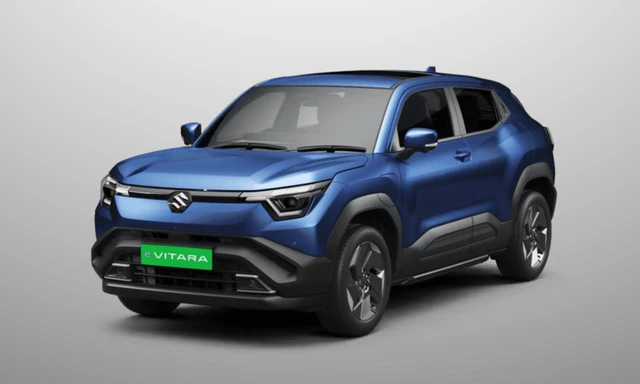 car&bike Team | Nov 29, 2025Maruti Suzuki e Vitara Launch On December 2: Here’s What We Know So FarThe e Vitara is the carmaker’s first shot in the electric vehicle segment, and here is everything that we know about it.4 mins read
car&bike Team | Nov 29, 2025Maruti Suzuki e Vitara Launch On December 2: Here’s What We Know So FarThe e Vitara is the carmaker’s first shot in the electric vehicle segment, and here is everything that we know about it.4 mins read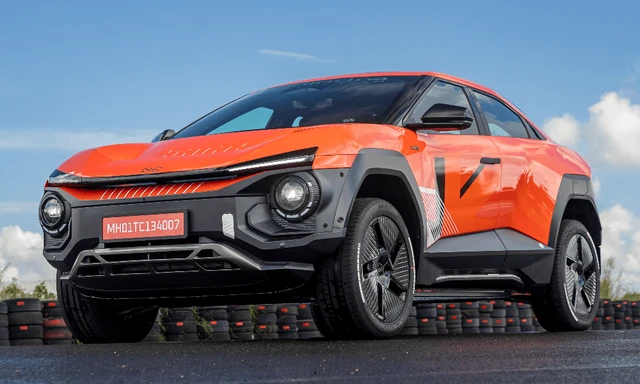 car&bike Team | Nov 28, 2025Mahindra BE 6 Formula E Edition: Variants ExplainedThe BE 6 Formula E Edition is offered in two variants, FE2 and FE3, both paired with the larger 79 kWh battery pack.3 mins read
car&bike Team | Nov 28, 2025Mahindra BE 6 Formula E Edition: Variants ExplainedThe BE 6 Formula E Edition is offered in two variants, FE2 and FE3, both paired with the larger 79 kWh battery pack.3 mins read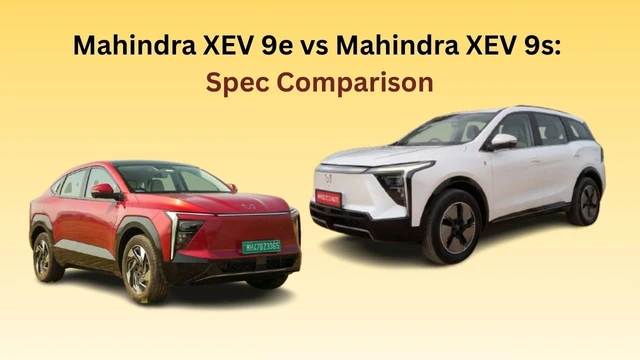 Bilal Firfiray | Nov 28, 2025Mahindra XEV 9e vs XEV 9s: Spec ComparisonMahindra has expanded its electric lineup with the all-new 7-seater XEV 9s. Being a third EV in the line-up after the eye-grabbing 9e, it's a good chance to compare the design, space, battery, range, pricing, and buyer suitability between these two siblings to help you decide which EV fits your needs.3 mins read
Bilal Firfiray | Nov 28, 2025Mahindra XEV 9e vs XEV 9s: Spec ComparisonMahindra has expanded its electric lineup with the all-new 7-seater XEV 9s. Being a third EV in the line-up after the eye-grabbing 9e, it's a good chance to compare the design, space, battery, range, pricing, and buyer suitability between these two siblings to help you decide which EV fits your needs.3 mins read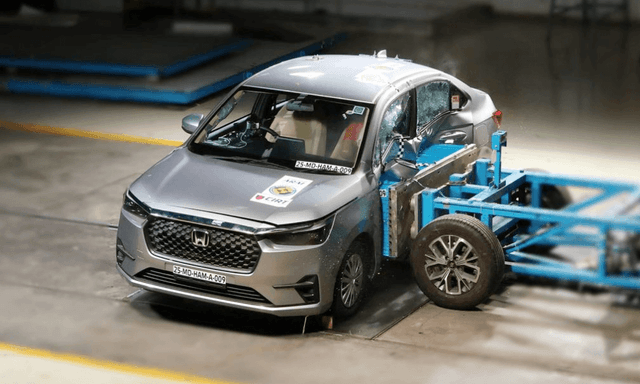 Jafar Rizvi | Nov 28, 2025Honda Amaze Secures 5 Stars In Bharat NCAP Crash TestsThe sub-compact sedan scored 28.33/32 points in Adult Occupant Protection and 40.81/49 points in Child Occupant Protection.2 mins read
Jafar Rizvi | Nov 28, 2025Honda Amaze Secures 5 Stars In Bharat NCAP Crash TestsThe sub-compact sedan scored 28.33/32 points in Adult Occupant Protection and 40.81/49 points in Child Occupant Protection.2 mins read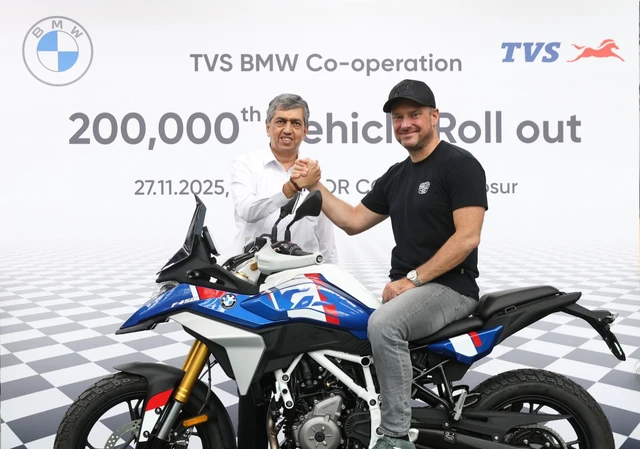 car&bike Team | Nov 27, 2025BMW F 450 GS Production Begins At TVS PlantTVS Motor Company and BMW Motorrad have announced a landmark achievement of 200,000 units produced under their partnership.1 min read
car&bike Team | Nov 27, 2025BMW F 450 GS Production Begins At TVS PlantTVS Motor Company and BMW Motorrad have announced a landmark achievement of 200,000 units produced under their partnership.1 min read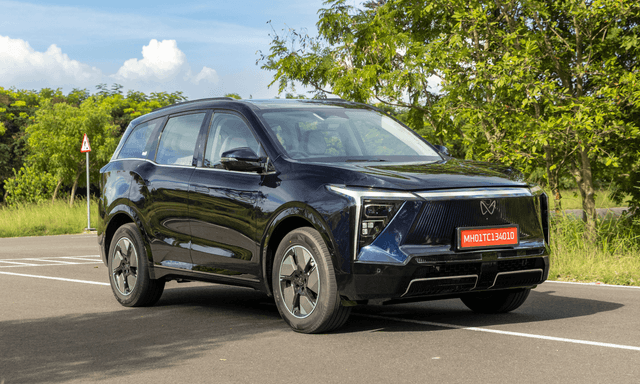 car&bike Team | Nov 27, 2025Mahindra XEV 9S: Variants, Features, Prices ExplainedThe XEV 9S is offered in four variants, with three battery pack options. Here is a rundown of what each variant gets.3 mins read
car&bike Team | Nov 27, 2025Mahindra XEV 9S: Variants, Features, Prices ExplainedThe XEV 9S is offered in four variants, with three battery pack options. Here is a rundown of what each variant gets.3 mins read
 Seshan Vijayraghvan | Nov 29, 2025Mahindra XEV 9S First Drive Review: Big Electric SUV, Bigger ExpectationsThe XEV 9S lands at a time when the EV crowd is growing fast. It’s a big, born-electric, three-row SUV that starts under 20 lakh. It sits close to the XUV700 in size, but the brief is very different. Here’s what it’s like on the road.11 mins read
Seshan Vijayraghvan | Nov 29, 2025Mahindra XEV 9S First Drive Review: Big Electric SUV, Bigger ExpectationsThe XEV 9S lands at a time when the EV crowd is growing fast. It’s a big, born-electric, three-row SUV that starts under 20 lakh. It sits close to the XUV700 in size, but the brief is very different. Here’s what it’s like on the road.11 mins read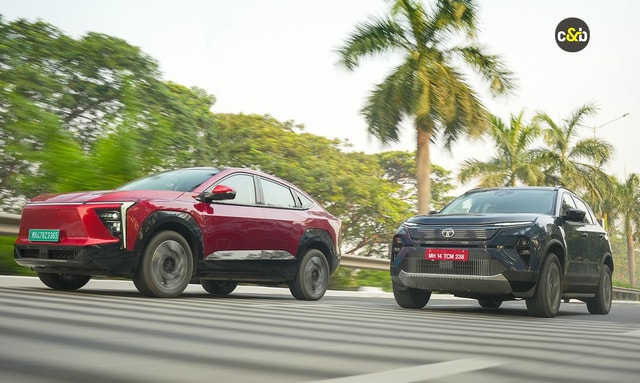 Bilal Firfiray | Nov 26, 2025Tata Harrier EV vs Mahindra XEV 9e: Battle Of India’s Electric TitansWhen India made two electric SUVs battle it out, the winner is the buyer. They get a choice to take home what’s best suited for them – and read on to find out which one is better for YOU.1 min read
Bilal Firfiray | Nov 26, 2025Tata Harrier EV vs Mahindra XEV 9e: Battle Of India’s Electric TitansWhen India made two electric SUVs battle it out, the winner is the buyer. They get a choice to take home what’s best suited for them – and read on to find out which one is better for YOU.1 min read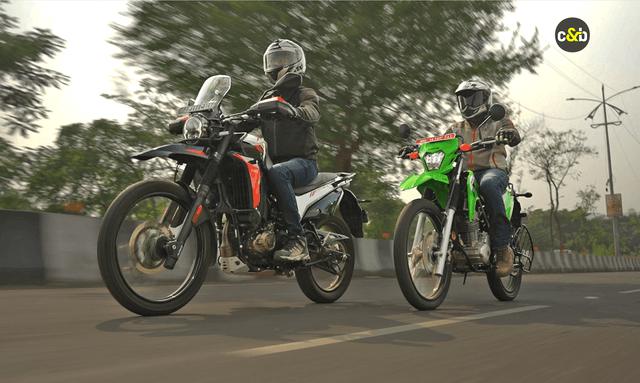 Janak Sorap | Nov 19, 2025Hero Xpulse 210 Vs Kawasaki KLX 230 Comparison Review: Dual-Sport DilemmaWith a price difference of just Rs 12,000, which of the two dual-sport motorcycles is meant for you?1 min read
Janak Sorap | Nov 19, 2025Hero Xpulse 210 Vs Kawasaki KLX 230 Comparison Review: Dual-Sport DilemmaWith a price difference of just Rs 12,000, which of the two dual-sport motorcycles is meant for you?1 min read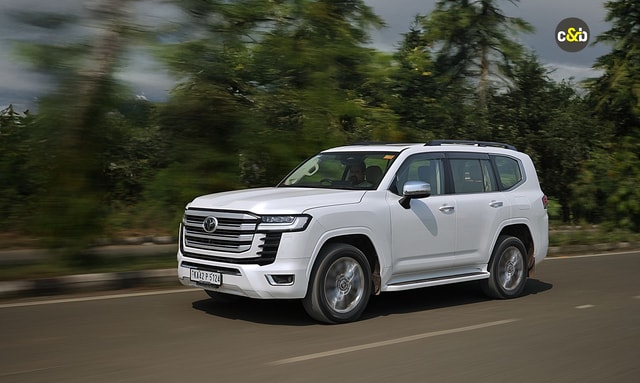 Jaiveer Mehra | Nov 17, 20252025 Toyota Land Cruiser 300 Review: Beast From The EastThe Land Cruiser name may have a long and storied history, but does it fit the bill for an Rs 2 crore-plus SUV in India?13 mins read
Jaiveer Mehra | Nov 17, 20252025 Toyota Land Cruiser 300 Review: Beast From The EastThe Land Cruiser name may have a long and storied history, but does it fit the bill for an Rs 2 crore-plus SUV in India?13 mins read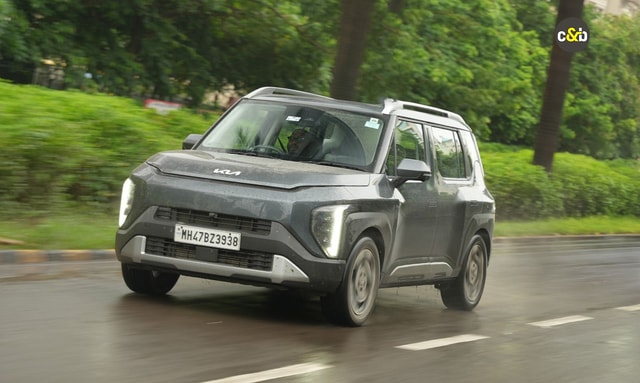 Seshan Vijayraghvan | Nov 17, 2025Kia Syros 1.0 Turbo Petrol: 6000 km Long-Term Review – Final Report!I lived with the Syros for more than 6000 km, over 3 months, and in this final report, I am going to talk about the Pros, the Cons, and everything in between.1 min read
Seshan Vijayraghvan | Nov 17, 2025Kia Syros 1.0 Turbo Petrol: 6000 km Long-Term Review – Final Report!I lived with the Syros for more than 6000 km, over 3 months, and in this final report, I am going to talk about the Pros, the Cons, and everything in between.1 min read





























































































































